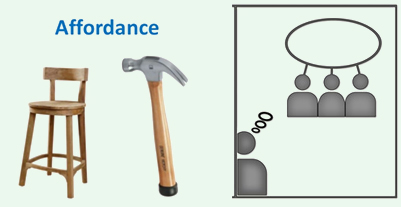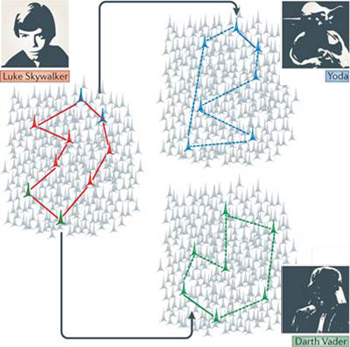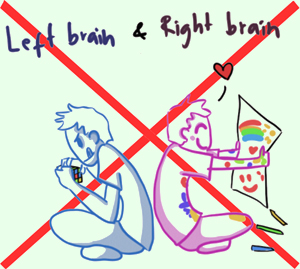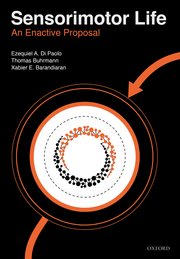Thursday, 1 November 2018
How the Concept of Affordances Has Evolved

Recently, I had the chance to realize how quickly a concept can change—in this case, the concept of affordances, In its original form, this concept first appeared in studies by James J. Gibson on the sense of sight, in the 1970s. In short, Gibson observed that when we see an object, what interests us the most is not so much its physical properties as the opportunities that it affords us to take action—to intervene more effectively in the world and thus better resist the ravages of time, or, in the elegant language of physics, to temporarily overcome the second law of thermodynamics, that entropy always increases.
For some years, this concept of affordances received little attention in cognitive science, because the prevailing highly computationalist paradigm, emphasizing inputs, manipulation of symbols, and outputs, militated against its full development. This is a common phenomenon in the history of ideas: a conceptual innovation that is just a bit ahead of its time does not fit into any existing, broader paradigm that would let the scientific community understand and embrace its full implications. (more…)
Body Movement and the Brain | Comments Closed
Wednesday, 10 October 2018
The Neuronal Traces of Our Conceptual Memories

Much has been written on the question of how our memories are physically represented in our brains. In this post, I discuss two answers that have been competing with each other, so to speak, for a number of years. In very general terms, according to one of these answers, our memories are distributed across vast populations of neurons, numbering in the millions (out of the roughly 16 billion neurons in the cortex as a whole). According to the other answer, these memories are instead recorded in much smaller, sparser populations of neurons, in particular in the hippocampus, which is a very old part of the cortex in evolutionary terms and is highly involved in memory.
In recent years, the latter, “sparse” conception of memory, in which at most a few thousand neurons are activated by any given memory, seems to be gaining the upper hand, or at least that is what I gather from two recent articles touting its merits. (more…)
Memory and the Brain | Comments Closed
Tuesday, 18 September 2018
There’s No Such Thing as a "Left-Brained" or "Right-Brained" Personality

In an earlier post in this blog, I addressed the widespread but mistaken idea that some people are more “left-brained” while others are more “right-brained”, and that the former are more rational while the latter are more creative. No evidence for this idea was found in a study on brain connectivity in over 1000 individuals, reported in the article “An Evaluation of the Left-Brain vs. Right-Brain Hypothesis with Resting State Functional Connectivity Magnetic Resonance Imaging”, published in August 2013 in the journal Plos One. (more…)
From Thought to Language | Comments Closed
Thursday, 16 August 2018
Human Brain Networks Operate on a Unimodal/Multimodal Gradient

This week I’d like to tell you about an article published in the journal PNAS in 2016. It is of interest because it does something that is extremely valuable in the realm of science: it shows how two bodies of data converge into a single phenomenon and thereby helps us to understand some things that were less clear before. Let me explain.
The article, by Daniel S. Margulies and no fewer than 11 co-authors, is entitled “ Situating the default-mode network along a principal gradient of macroscale cortical organization”. In slightly simpler terms, their study involved situating the brain’s default mode network along a large-scale organizational gradient within the cerebral cortex. Okay, let me explain further. (more…)
From the Simple to the Complex | Comments Closed
Friday, 27 July 2018
Two Books on the Enactive Approach in Cognitive Science

This week, I’d like to tell you about two books on the philosophy of cognitive science. Both of them were published in 2017, and both of them deal with the enactive approach first proposed in the 1990s by pioneers such as Francisco Varela and Evan Thompson. Since then, the enactive approach has become a major research topic in contemporary cognitive science, so it is no surprise that entire books are now devoted to it.
The first of these two books is Sensorimotor Life: An Enactive Proposal, by Ezequiel Di Paolo, Thomas Buhrmann and Xabier E. Barandiaran. (more…)
Body Movement and the Brain, From Thought to Language | Comments Closed







